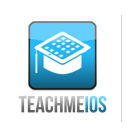This content can only be accessed by registered users. Please register for a free account to download your free copy of "10 Ways to Improve iOS Battery Life" and subscribe to receive updates. In addition, you will gain access to additional content including a growing number of premium iPhone, iPad, and iPod Touch backgrounds that you can download for free once you have registered. Click here to register now: Register
Already a member of the TeachMeiOS community? Login here:

